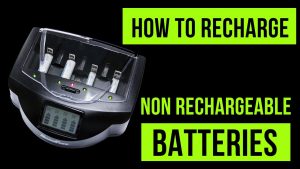How To Add a Timer To Battery Operated Lights
If you want to control your battery-operated lights without manual intervention, adding a timer to your lights can be a great solution. Whether you’re looking to create a cozy ambiance in your living room or add some light to your backyard for an evening barbecue, having the ability to turn your lights on and off on a schedule can be a game changer.
Fortunately, adding a timer to battery-operated lights is relatively easy and can be done with a few simple steps. In this article, we’ll walk you through the process of adding a timer to battery-operated lights, so you can enjoy a well-lit space without any hassle.
Step-by-Step Guide to Adding a Timer to Battery-Operated Lights
Adding a timer to battery-operated lights is a great way to save energy and extend the battery life. Here are some steps you can follow on how to add a timer to battery operated lights:
Step 1: Choose the Right Timer
The first step in adding a timer to your battery-operated lights is choosing the right timer. There are many different types of timers available, so it’s important to choose one that is suitable for battery-operated lights.
Below is an example of a DC 5V-36V Timer Module Trigger Cycle Delay Timer available on Amazon
Achieving functionality with a 6-30VDC timer is possible, allowing for adaptability in your setup. While relying on four alkaline batteries can sustain operation temporarily, it becomes uncertain once the voltage per cell dips below 1.5V. An alternative approach involves experimenting with the fairy light battery pack to power the timer. However, it’s crucial to note that this may result in a rapid decrease in voltage, potentially falling below the timer’s minimum threshold at an accelerated rate.
Step 2: Wiring the LED Strip
Let’s start with the basics. As an example we’ll be wiring up the LED strip to the power supply. Here’s how you do it:
- Connect the positive (power) for the light to the positive (V+) on your LED strip.
- Ground for the lights goes into the ground (GND) on the LED strip.
- Connect the positive from the power supply to the positive (V+) on the LED strip.
- Ground from the power supply goes into the ground (GND) on the LED strip.
Now, with power and load connected, you can turn on the setup. You’ll witness the LED strip lighting up and showcasing its brilliance.
Step 3: Trigger
Moving on to the trigger mechanism, we’ll use a battery box as the trigger source. Follow these steps to initiate the trigger sequence:
- Positive Connection: Connect the positive end of the battery box to the positive terminal of the LED strip.
- Negative Connection: Similarly, connect the negative ends to complete the trigger circuit.
- Activation: Turn on the battery box to trigger the system. The LED strip should remain inactive until triggered.
Below is an example of a battery box power source.
Trending Today
Step 4: Programming
Now, let’s explore the programming aspect. We’ll guide you through programming two different scenarios for an enhanced LED experience.
Program 1: Countdown Activation (Program 4)
- Activation: Press and hold the set button until you get a ‘one-two’ indication.
- Select Program: Choose program four by pressing the set button.
- On Time Setting: Adjust the ‘on time’ to your preference (e.g., 4.5 seconds).
- Confirmation: The system will blink three times, indicating readiness for a trigger.
Program 2: Dynamic Lighting Experience (Program 2.2)
- Activation: Press and hold the set button until you get a ‘one-two’ indication.
- Select Program: Although there’s no explicit 2.2, select program two.
- On Time Setting: Adjust the ‘on time’ (‘b’) to your preference.
- Off Time Setting: Adjust ‘cl’ for the off time delay.
- Confirmation: Hold the set button until you get three blinks, indicating readiness for a trigger.
Conclusion
Congratulations! You’ve successfully wired, triggered, and programmed your LED strip for a customized lighting experience. While mastering this LED control system might require a bit of experimentation, the flexibility it provides opens the door to a myriad of creative possibilities. Best of luck as you embark on your LED project!
In conclusion on how to add a timer to battery operated lights, adding a timer to battery-operated lights is a simple and effective way to save energy and extend the life of your batteries. With the right tools and a little bit of patience, you can easily add a timer to your battery-operated lights and enjoy the convenience of automatic lighting control. Whether you are using your lights for decoration or functional purposes, adding a timer is a great way to enhance your experience and make the most out of your battery-powered lighting. So go ahead and give it a try, and enjoy the benefits of having a timer-controlled lighting system in your home or office!























